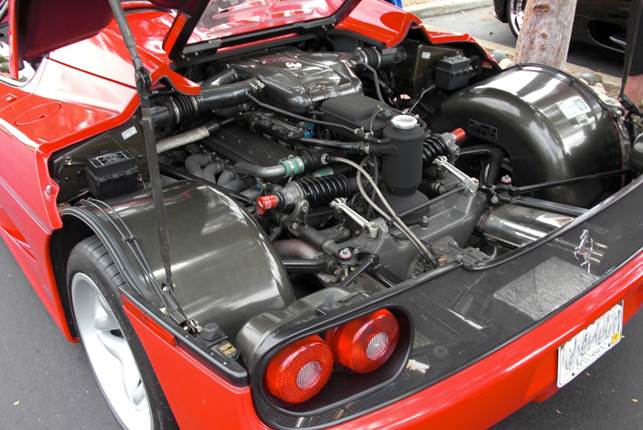They say it is better to have loved and
lost than never to have loved at all. Owning and then having to part fairly
suddenly with a Ferrari F50 generates very similar feelings. On the question of
why, the answer is simple but the situation complex.
Very shortly, I will be moving to the US
for at least several years. The change of domicile has happened quite quickly
and is leading to a massive clean-out of the garage. The main cause of this
cull is the difference in EU and US safety and emissions regulations, which
makes it nearly impossible to import EU-spec cars into the US. The only real
loophole is that after 25 years a car becomes officially regarded as a classic
and is then exempt from US safety and emissions regulations. As the F50 is only
17, keeping it was not a practical option.

The
F50 was Ferrari’s super car in 1995 and was built to commemorate the 50th
anniversary of Ferrari
The F50 was originally purchased from Cars
Ferrari in Exeter and they have always done an outstanding job of taking care
of it, so I thought it was only fair that they were also given the opportunity
to handle the sale. A short call to the dealership’s general manager confirmed
both their interest and regret. Within 24 hours a serious buyer had come
forward, and by sundown the next day the parameters of the deal were agreed and
the deposit wired. Shortly afterwards, the car’s hard-top, manuals, photo build
book and luggage set were all collected, leaving a gaping hole in the soul of
my garage.
Of all the cars I have sold over the years,
I have never had a deal happen as quickly. I put this down to both the booming
market for rare Ferrari supercars and the fact that my F50 was a well-known car
with a comprehensive history. In fact, I was aware of a few collectors that had
expressed serious interest should the F50 ever come onto the market again.
Pedigree does matter, as was so clearly demonstrated by the speed of the F50
deal compared to the painful drawn-out experience I had with a Mosler.

The
F50 has a 4.7 litre naturally aspirated V12 engine that was developed from the
engine originally used in the 1992 Ferrari Formula One race car
There was not a single time in my seven
years of F50 ownership when I drove the car and it didn’t make me feel special.
Just sitting behind the steering wheel would put a huge smile on my face. Turn
the key, press the start button and the result would engage and engulf all your
senses in petrolhead euphoria. With that great V12 bolted directly to the tub,
you felt that the car was alive, and on an outing when it all owed smoothly,
car and driver became one. Getting the F50 motoring quickly down a country road
was an experience that was hard to top. Put the F50 on a track and very little
could stay with it, including one very surprised Ariel Atom driver, if I
remember right.

Ferrari
F50 is fitted with an insulated stainless steel exhaust system
Looking back over the car’s history, the
yearly mileage was very consistent during my ownership. I do believe this made
a major contribution to its excellent running condition. F50s hate to sit, even
more so than other Ferraris. Looking over the service invoices, the
second-largest bill was $8,535 for a clutch replacement shortly after I
purchased the car. The replacement was not due to clutch wear but caused by a
seal that had failed due to lack of use. In fact, while the total cost of the
services was just under $51,200, when you take out the $22,190 for the
once-every-decade fuel cell replacement and $8,535 for the clutch, the annual
servicing costs averaged a quite reasonable (for a limited-edition Ferrari
supercar) $2,900.
To help soothe the pain of the sale, I have
requested a detailed pre-purchase inspection on a motor vehicle out in
California which sports a carbonfibre tub, V10 engine, six-speed gearbox and
ceramic brakes. More on this and the rest of the garage massacre to follow.